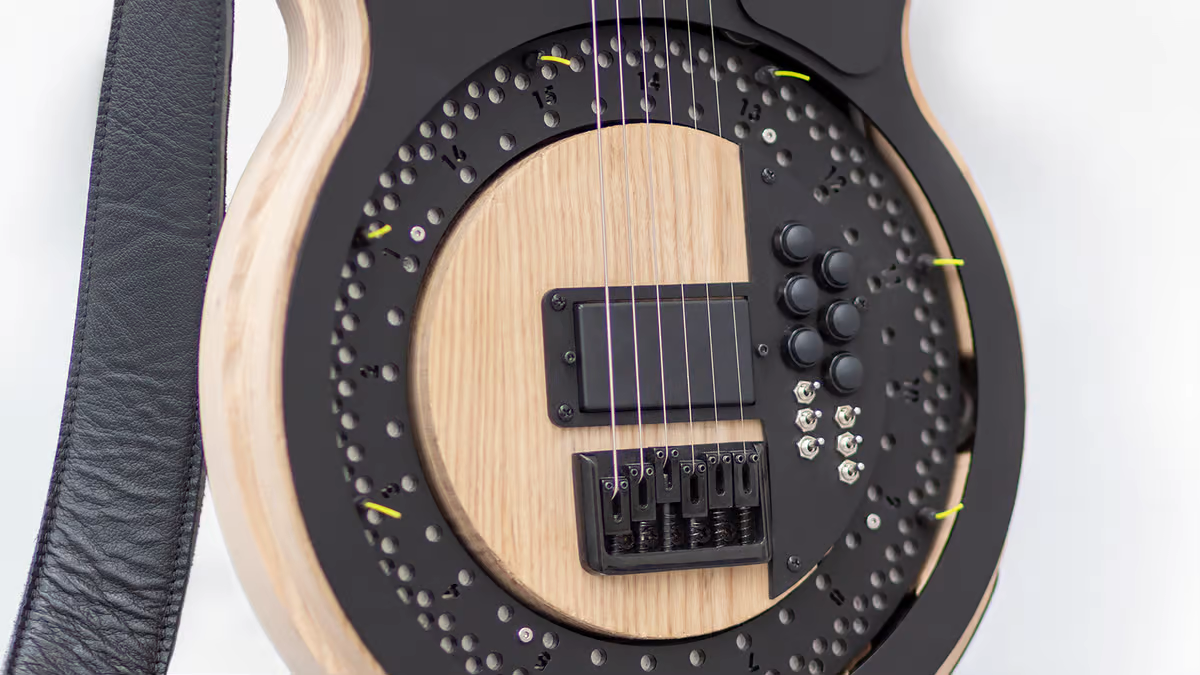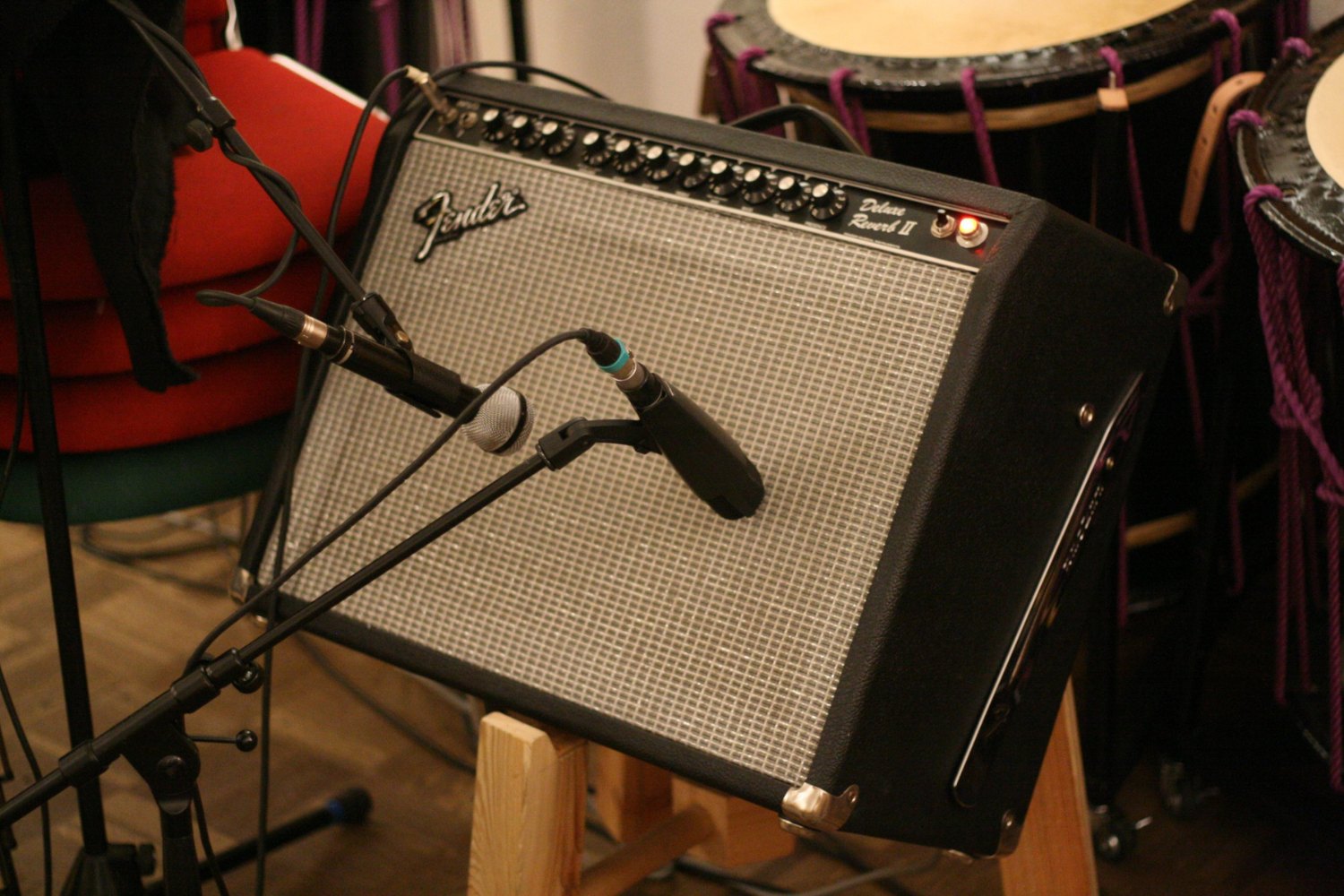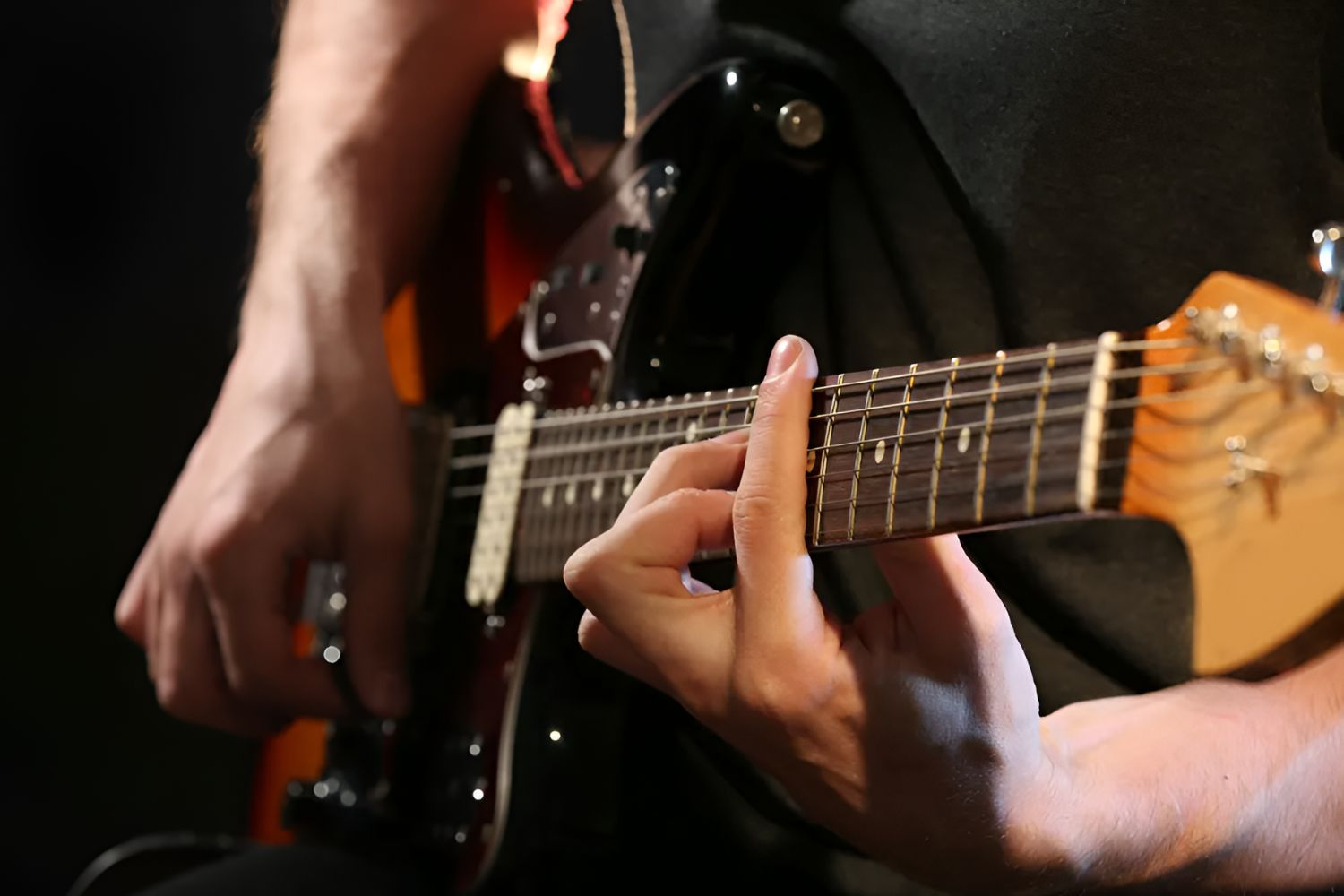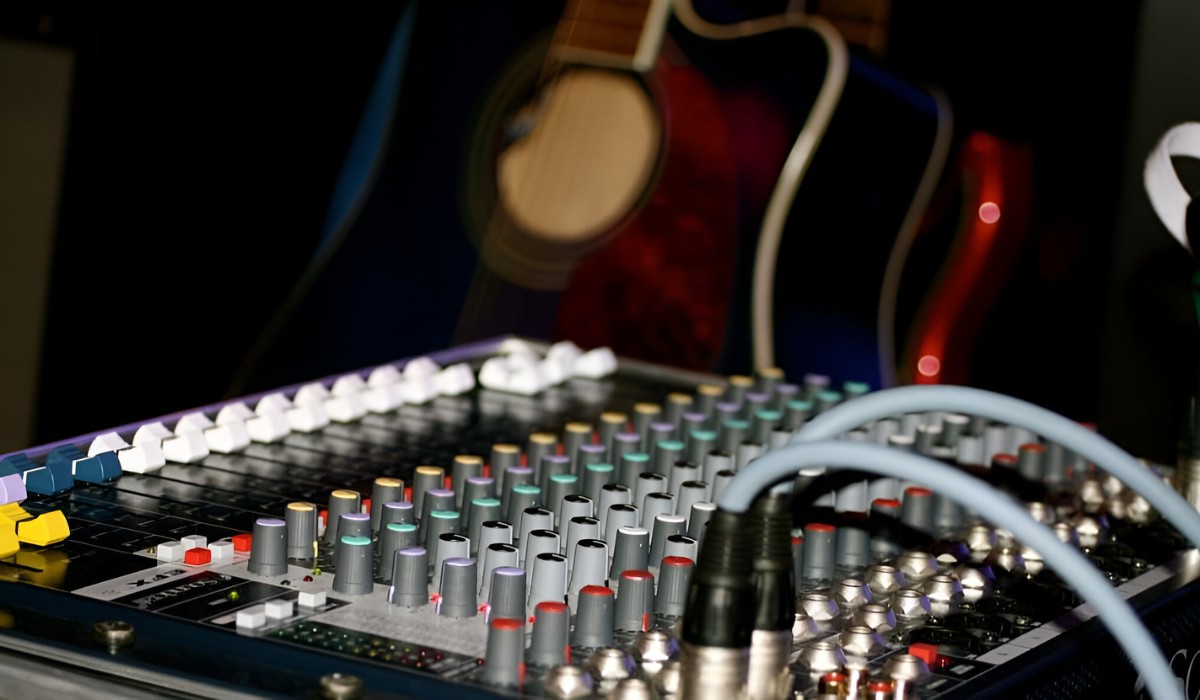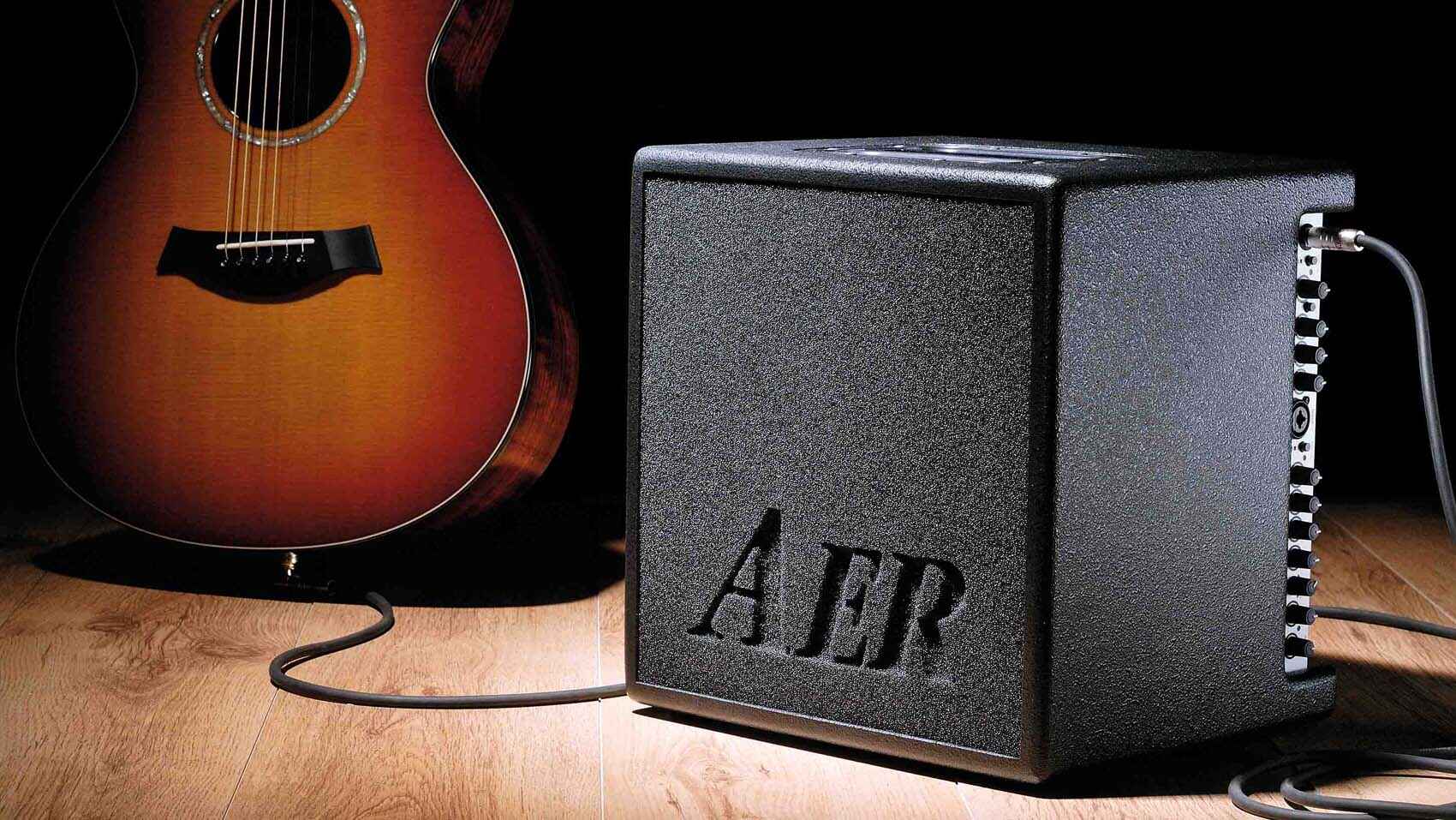Introduction
So you've recorded an amazing electric guitar performance, and now it's time to mix it into your song. Mixing electric guitar can be a rewarding process that allows you to sculpt the perfect tone and place the instrument perfectly in the mix. Whether you're aiming for a gritty, aggressive sound or a smooth, polished tone, the mixing process is where you can bring out the best in your guitar tracks.
When it comes to mixing electric guitar, there are several key steps to consider. From choosing the right guitar and amp to understanding EQ and compression, each stage plays a crucial role in achieving a professional and captivating sound. Additionally, setting up microphones, adding effects, and mixing multiple guitar tracks are all integral aspects of the process that contribute to the overall sonic landscape of your music.
In this comprehensive guide, we'll delve into each of these essential steps, providing practical tips and insights to help you elevate your electric guitar mixes. By understanding the intricacies of each stage and learning how to manipulate various parameters, you'll be better equipped to create dynamic, impactful guitar tones that enhance your music in profound ways. So, let's embark on this sonic journey and unlock the secrets of mixing electric guitar to unleash its full potential.
Choosing the Right Guitar and Amp
When it comes to mixing electric guitar, the foundation of a great sound begins with the right instrument and amplifier. The choice of guitar and amp can significantly influence the overall tone and character of the recording. Whether you’re aiming for a classic rock sound, a modern metal crunch, or a clean jazz tone, selecting the appropriate gear is paramount.
First and foremost, consider the type of guitar that best complements the musical style and sonic vision for your mix. For instance, a single-coil-equipped guitar, such as a Fender Stratocaster, can deliver bright, articulate tones that are well-suited for genres like blues, pop, and funk. On the other hand, a humbucker-equipped guitar, like a Gibson Les Paul, offers a thicker, more robust sound that excels in rock, hard rock, and metal contexts. Understanding the tonal characteristics of different guitars will guide you in making the right choice for your mix.
Equally important is the selection of the amplifier. The amp’s tonal qualities, ranging from clean and pristine to overdriven and aggressive, play a pivotal role in shaping the guitar’s sound. Whether you opt for a vintage tube amp, a modern modeling amp, or a digital amplifier, each type imparts its own sonic signature to the recording. Additionally, experimenting with various amp settings, such as gain, EQ, and presence, allows for further customization of the guitar’s tonal palette.
Furthermore, the choice of guitar and amp also influences the recording process. For instance, capturing the sound of a cranked tube amp in a well-treated room can yield rich, resonant tones with natural harmonics, while using a direct input approach with amp modeling technology provides flexibility and precision in shaping the sound during mixing.
By carefully selecting the right guitar and amp combination, you lay a strong foundation for the subsequent stages of the mixing process. The sonic characteristics and tonal nuances of the chosen gear will serve as the building blocks for crafting a compelling and impactful electric guitar mix.
Setting Up Microphones
Once you have the right guitar and amp combination, the next critical step in the electric guitar mixing process is capturing the sound through microphones. Proper microphone placement and selection are essential for capturing the nuances and tonal qualities of the instrument, allowing you to achieve a rich and detailed recording that translates effectively in the mix.
When it comes to miking electric guitar amplifiers, there are various approaches to consider. One common method involves using a dynamic microphone, such as the industry-standard Shure SM57, placed close to the amp’s speaker cone. This technique captures the direct sound of the amplifier, emphasizing the punch and clarity of the guitar tone. Experimenting with the microphone placement, angling, and distance from the speaker cone enables you to fine-tune the tonal characteristics and achieve the desired balance of brightness and warmth.
Another popular approach is to blend multiple microphones to capture different aspects of the guitar’s sound. Combining a dynamic mic with a condenser mic, positioned at varying distances and angles from the amp, can yield a more expansive and layered tone. Additionally, utilizing room mics to capture the natural ambience and resonance of the recording space can add depth and dimension to the guitar sound, enhancing its presence in the mix.
Furthermore, the choice of microphone preamps and signal processing during recording can significantly impact the captured sound. Selecting high-quality preamps and experimenting with subtle EQ adjustments can further enhance the tonal fidelity and transient response of the recorded guitar signal, providing a solid foundation for the subsequent mixing stages.
It’s important to approach microphone setup with a discerning ear, as the captured sound will serve as the raw material for the mixing process. By meticulously selecting and positioning microphones, you can ensure that the unique sonic characteristics of the electric guitar are faithfully captured, setting the stage for crafting a compelling and vibrant mix that showcases the instrument in its best light.
Understanding EQ and Compression
Once the electric guitar signal is captured, the next phase in the mixing process involves applying equalization (EQ) and compression to shape and refine its sonic characteristics. These powerful tools allow you to sculpt the guitar’s tonal balance, control dynamics, and ensure that it sits cohesively within the mix.
EQ plays a pivotal role in enhancing the guitar’s tonal clarity and addressing frequency imbalances. By utilizing parametric or graphic EQs, you can attenuate or boost specific frequency bands to tailor the guitar’s timbre to suit the overall mix. For instance, cutting excessive low-end frequencies can mitigate muddiness and tighten the guitar’s low-end response, while boosting midrange frequencies can accentuate the instrument’s presence and articulation. Additionally, applying high-frequency boosts can add shimmer and air to the guitar sound, enhancing its overall sparkle and definition.
Furthermore, compression is a fundamental tool for controlling the dynamic range of the guitar signal, ensuring a consistent and balanced sonic presence. By applying gentle compression, you can tame peaks and enhance sustain, resulting in a more even and polished guitar performance. This is particularly useful for smoothing out transient spikes and ensuring that the guitar maintains a steady and impactful presence throughout the mix. Additionally, utilizing compression in conjunction with EQ allows for greater tonal control and dynamic shaping, enabling you to achieve a cohesive and impactful guitar sound that complements the overall musical arrangement.
Understanding the interplay between EQ and compression is crucial for achieving a well-defined and polished guitar tone. By judiciously applying these processing tools, you can refine the instrument’s sonic characteristics, address tonal imbalances, and ensure that it occupies the appropriate sonic space within the mix. Moreover, experimenting with different EQ curves, compression ratios, and attack/release settings allows for creative exploration and fine-tuning of the guitar’s sonic identity, ultimately contributing to a compelling and impactful mix that showcases the instrument in its best light.
Adding Effects
Enhancing the sonic landscape of electric guitar tracks often involves the strategic application of effects to imbue the instrument with depth, texture, and character. From time-based effects like reverb and delay to modulation effects such as chorus and phaser, the judicious use of effects can elevate the guitar’s sonic presence and imbue it with a captivating sense of space and dimension.
Reverb, a staple effect in the mixing arsenal, can add ambience and spatial depth to the guitar sound, simulating the acoustic environment in which the instrument is situated. By adjusting parameters such as decay time, pre-delay, and diffusion, you can tailor the reverb to create a sense of intimacy or expansiveness, effectively placing the guitar within a cohesive sonic environment that complements the overall mix.
Similarly, delay effects can introduce rhythmic movement and spatial interest to the guitar, imparting a sense of depth and dimension. Whether used subtly to create a sense of space or employed more prominently for rhythmic emphasis, delay effects can imbue the guitar performance with a captivating sense of movement and intrigue, enriching its sonic presence within the mix.
Modulation effects, including chorus, phaser, and flanger, offer a palette of tonal coloration and movement that can infuse the guitar with richness and complexity. These effects can add a sense of shimmer, movement, and intrigue to the guitar’s timbre, enhancing its expressiveness and contributing to a more dynamic and engaging sonic presentation.
Moreover, the strategic use of distortion, overdrive, and fuzz effects can further shape the guitar’s tonal character, adding grit, aggression, and harmonic complexity to the sound. Whether aiming for a vintage, saturated tone or a modern, high-gain texture, these effects can significantly impact the guitar’s sonic identity, allowing for creative exploration and tonal experimentation.
By skillfully integrating effects into the electric guitar mix, you can elevate the instrument’s sonic impact and imbue it with a compelling sense of depth, movement, and expressiveness. The judicious application of reverb, delay, modulation, and distortion effects allows for creative exploration and sonic enhancement, ultimately contributing to a captivating and immersive mix that showcases the electric guitar in its full sonic glory.
Mixing Multiple Guitar Tracks
When working with multiple electric guitar tracks in a mix, it’s essential to employ strategic techniques to ensure that each instrument occupies its own sonic space while contributing to a cohesive and impactful overall sound. Whether you’re blending rhythm and lead parts, layering multiple overdubs, or crafting intricate guitar arrangements, the mixing process plays a vital role in balancing and integrating these tracks to create a compelling sonic tapestry.
One fundamental aspect of mixing multiple guitar tracks is establishing a sense of spatial positioning within the stereo field. By panning rhythm and lead guitars to distinct positions, you can create a sense of width and depth, allowing each part to stand out while avoiding sonic clutter. Additionally, utilizing automation to adjust panning throughout the mix can enhance movement and dynamics, adding further interest and energy to the guitar arrangement.
Furthermore, applying EQ to individual guitar tracks enables you to carve out specific frequency ranges, ensuring that each instrument occupies its own sonic niche without conflicting with other elements in the mix. For instance, rolling off excessive low-end frequencies on rhythm guitars can prevent muddiness and maintain clarity, while subtly accentuating midrange frequencies on lead guitars can enhance their presence and impact.
Additionally, utilizing dynamic processing, such as compression and expansion, on individual guitar tracks allows for greater control over the instrument’s dynamic range and transient response. By ensuring consistent levels and controlling peaks, you can achieve a more balanced and polished guitar mix, enhancing the overall impact and clarity of the arrangement.
Moreover, integrating time-based effects, such as reverb and delay, across multiple guitar tracks can create a sense of cohesion and spatial depth, unifying the individual parts within a shared sonic environment. Carefully tailoring the parameters of these effects for each track ensures that the guitars blend seamlessly while maintaining distinctiveness and clarity.
By skillfully balancing and integrating multiple guitar tracks, you can create a dynamic and immersive sonic landscape that showcases the expressive potential of the instrument. Through strategic spatial positioning, tonal sculpting, dynamic control, and cohesive integration of effects, the mixing process plays a crucial role in crafting a captivating and impactful guitar arrangement that enriches the overall musical experience.









